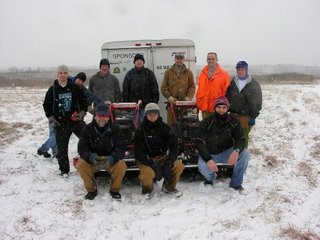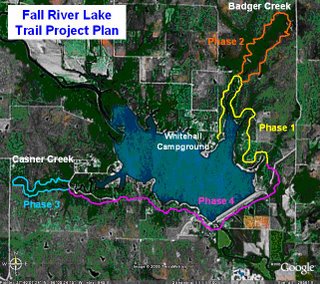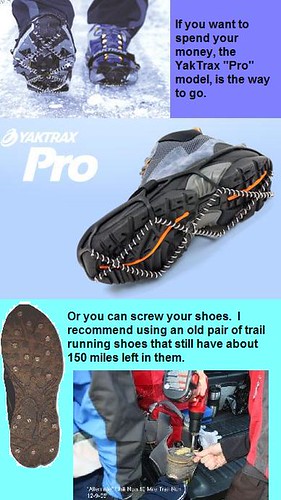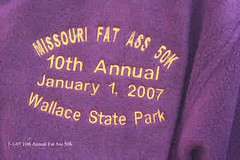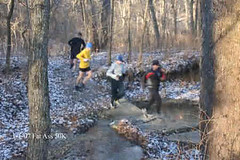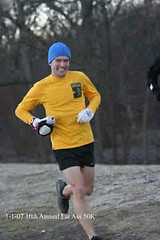If you are ever wanted to try trail running and wanted to find and buy a decent pair of trailrunning shoes...read on.
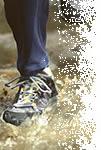
I consider myself an experienced runner and trailrunner. I ran for more than 25 years on pavement before converting to trails exclusively, about 5 years ago. Back in my "roadie" days, I finished 38 road marathons, including Boston, and many, many shorter races. In the past 7 years, I've run in many short-distance to long-distance trail races, from 5K to 100-mile trail runs. I train for at least 50 miles per week on rocky, hilly, and root-filled trails, (even after dark). I've never been the fastest guy around, (but I'm tenacious as hell). I used to have every chronic running injury known to man, when I ran exclusively on the roads. I even used to get blisters on a marathon, which I now consider a "medium-distance" run. It's extremely rare for me to get a blister now, even on a wet & muddy 100-mile run. I don't have any chronic running injuries anymore, and I'm approaching 50 years old. Why am I telling you this?
Because if you are going to purchase a pair of trailrunning shoes with your hard-earned cash, you might be able to use some of my hard-earned knowledge. There are many "trailrunning experts" online. For instance, this is what the supposed "experts" at About.com will tell you:
"Trail shoes are, for the most part, quite similar in construction to road running shoes. However, they have added traction and more durable uppersoles. Some road shoes work well as part-time trail shoes (e.g. the Saucony GRID Stabil), while many trail shoes work well on the road (e.g. the Adidas Trail Reponse). Features to look for include: added traction, durability without too much weight, and motion control for running on uneven surfaces."
This is absolutely incorrect information. This is advice from someone who is obviously a roadrunner or a "rails to trails" trail runner. He should be drug through the mud by his poseur-trail-shoe laces!
This is some more experienced advice:
True trailrunning shoes are not just roadrunning shoes with more durable uppersoles and added traction. Trailrunning shoes should be fairly light, and have more protection for your toes and forefoot area, to keep from getting "rock & root-induced trauma." You also want your heel to sit lower within the back of the shoe to avoid ankle sprains. Roadrunning-style "motion control shoes" tend to be higher in the heel area, less flexible, and more prone to putting torque on your ankle area than true trailrunning shoes. While wearing these "high-heeled" shoes, If you were to step on an small stump, rock or root, (which you eventually will), you would have a much higher chance for a severe ankle injury. Not good. Also, the stiffer the shoe, the less of your shoe bottom contacts the surface of the uneven-surfaced trails. You therefore have less control and less "trail feel" with a stiff shoe. Stiff also equals heavy, in most cases. There is absolutely no reason why a decent trailrunning shoe should be any heavier than a roadrunning shoe.
More on motion-controlled shoes:
Not wearing a motion-control shoe on an uneven surface seems counter-intuitive, at first. What your motion-control shoes do for you on a road surface, is protect you from the common over-use injuries associated with running continuously on a flat, hard surface. Over-use injuries are negligible on uneven (and softer) trail surfaces. It's a whole new world of running. Since your pace, foot-strike angle, etcetera, is constantly changing on a trail run, you won't use the same-old muscle groups that you do for roadrunning. You will also be running on a softer surface, and won't be taking as much of a pounding. Hence, over-use injuries go out the window.
By the way:
With trail running, you will trade the chronic, over-use injuries for the occasional "acute" injury. Paying attention to the trail constantly is part ot the fun, though. Now back to trail shoes...
Another much-touted trail shoe recommendation...buy shoes made with GoreTex uppers. Don't get me wrong, GoreTex is a fine product. I own a pair of GoreTex trailrunning shoes myself, but it's not the only type of trail shoe that I own. But, I WOULD NEVER USE MY GORETEX SHOES ON A COURSE WITH STREAM CROSSINGS. Why? Because when GoreTex shoes fill with water and the water will not drain out. I've known many folks who have made this mistake. You will see them lying on their back after their 2nd or 3rd stream crossing, with their feet in the air, trying to drain their shoes out. What would I use GoreTex shoes for, then? I would use them on a muddy or slushy course in the wintertime; a course without stream crossings or over-the-ankle-deep puddles. GoreTex shoes tend to keep your feet warm, so they are a good choice for winter runs, given the right course. They are hotter than blazes in the summer though, and they will fill-up with your own sweat! Having a drainable, breathable top is a better choice, if you will be hitting any stream crossings during your run or event. You will find that your shoes will dry-out noticibly after about 10 minutes of running.
What about "trail running sandals?" In two words: they suck. They let every stick, pebble, and piece of sand come in potential contact with your foot. The stuff will accumulate between the bottom of your foot and the sandal bottom. Shoes with a severely-open mesh top are in the same boat. There's a balance between having a breathable / drainable top, and having a totally-open top. Always keep in mind the 3 things that cause blisters: friction, heat, and moisture. If you are letting pebbles and sand in on a regular basis, you're going to have a problem with blisters due to adding a bunch of friction-inducing crap to your shoes.
Something else to look out for:
Many trailrunning shoes have soles with cut-out areas in the arch area of the tread to save weight. Experienced trailrunners call these cut-outs "mud pockets." Sticky mud will tend to accumulate in these mud pockets, and make your shoes extremely heavy during your run. It's best to avoid shoes with mud-accumulation areas if you run in muddy conditions, or if you will be running a race with mud. There are worse things, though. Nike's new "Shox Junga" has about 20 areas on the bottom of each shoe for mud and crap to accumulate in the "shox" areas. In my opinion, these shoes are made for wanabee trailrunners with way too much money to spend, who never intend to run on a trail. It's kind of like people who will buy a Jeep Rubicon to commute on the freeway everyday, without ever intending to take it off-road.
Finding the right fit:
Luckily, trailrunning shoes come in a wide variety of fits, sizes, and types. You should be able to find a shoe that is right for your foot type, style of running, and the conditions that you plan to run in and on. I always advocate "try, before you buy" at your local merchant anyday, over ordering over the internet. They will provide you the attention needed to find the right fitting shoe. Even with "free shipping" back to the the vendor, do you really have the time to re-package your ill-fitting internet shoes, to ship them back?
How long do they last?How many miles can you put on your trailrunning shoes? About as many as on your roadrunners...500 miles maximum. Do not be fooled by tread life. A better indication would be to look at the sides of the midsole (the foam part between the outsole and the upper). If it is noticeable "wrinkly," it's probably time to buy a new pair. Also, if they start to "feel dead" during a long run, then it's time to get rid of them. An excellent strategy is to rotate several pairs of trailrunning shoes at the same time, even if they are the same model. It's also nice to have a different model for "special conditions." Also, trail shoes should never cost any more than roadrunning shoes.
Final advice:
Don't be fooled with gimmicks. This is true for all running shoes. What works, works. And what works for you, may not work for everybody else. If you want to get more advice about trailrunning shoes, check out what the ultrarunners are running in. They tend to run more miles on trails than the average, occasional trail runner.
Some other sources of information:
Ultrarunning Magazine and
TrailRunner Magazine or any old opinionated (but experience) fool, such as myself.
What trail shoes am I currently running in?
I'm always searching for that "perfect" trail shoe. Currently, I'm running in these models:1)
Vasque Blur - my current fave and an all-around good shoe. Good for 5K's to 100-milers. Decently lightweight with a flexible forefoot and really good rock protection. They have very good "trail feel" for a shoe as cushy as they are. They dry fast (after water crossings), too.
2)
Keen Ochoco - A good winter mud/slush shoe. They may look odd, but they keep your feet warm and are incredibly comfortable. I ran a 50K in them on 1/1/07, and they felt great for the whole run. Don't wear them through deep stream crossings, though (because they will fill with water).
3)
Montrail Continental Divide - A decent shoe, but not as good as its predecessor, the Leona Divide. (Too tall in the heel area and "too substantial" for my tastes). I've had better results with this shoe on flatter trails (and actually on pavement), and they felt great under those circumstances. This shoe would be a great choice for running very long distances on the Trolley Track trail, on the Blue Springs Little Trace trail, or at the Heatland 100/50 mile trail races.
4)
The 2007 version of the Mizuno Wave Ascend (
the Wave Ascend 2)- Much better than their 2006 model...a terrific trailrunning shoe with light weight and good traction. It's another current favorite of mine, at least for short to medium distance trail runs. They have excellent trail feel, they dry-out fast, and just feel fast. They would be a very good choice for running in warmer weather, as well. I'm going to try them out on 40-miles of my next 100-miler, to see how they hold up on a longer run.
Update: I ran the last 60-miles of the Feb 3rd Rocky Raccoon 100 in these shoes. They were terrific. Gary Gribble's carries these locally.
5)
Montrail Odyssey - I've only run in these shoes twice, but they really fit the bill as decent, lightweight trailrunning shoes, with lots of trail feel and flexibility. I need to run in them for a while, and at least do at least a 50K in them to give them a full review. I wouldn't use these on a muddy run, though, because they have a large "mud pocket" built into them.
Gary Gribble's now carries these locally.
Where can you purchase trailrunning shoes locally? Click
Right HERE.
What about extra traction on the snow and ice??? Click
HERE.
Happy trails,
Bad Ben
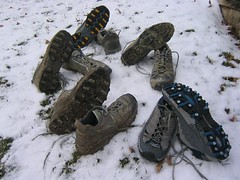 I'm the "Imelda Marcos" of Muddy Shoes!
I'm the "Imelda Marcos" of Muddy Shoes!
